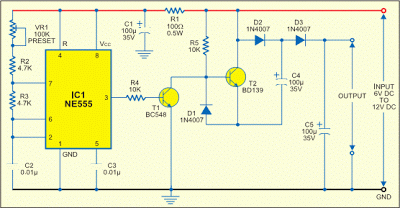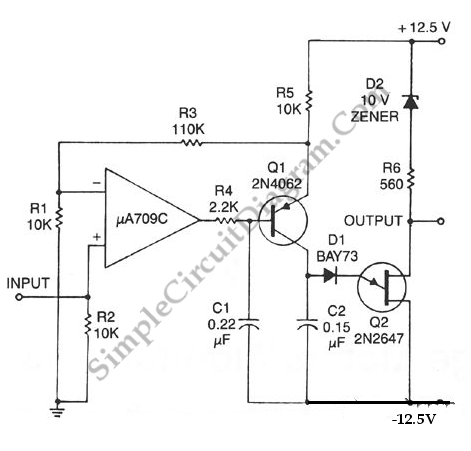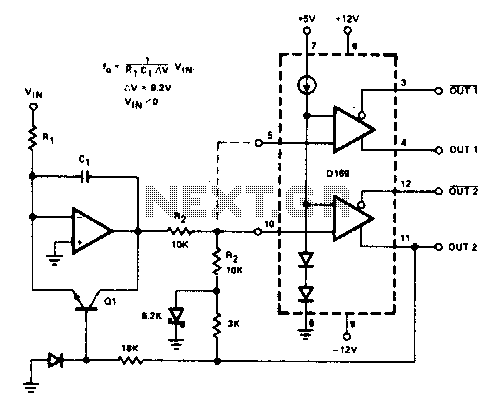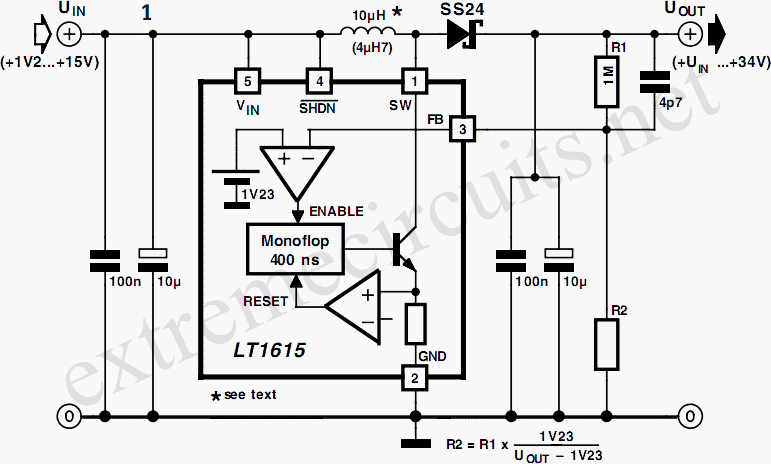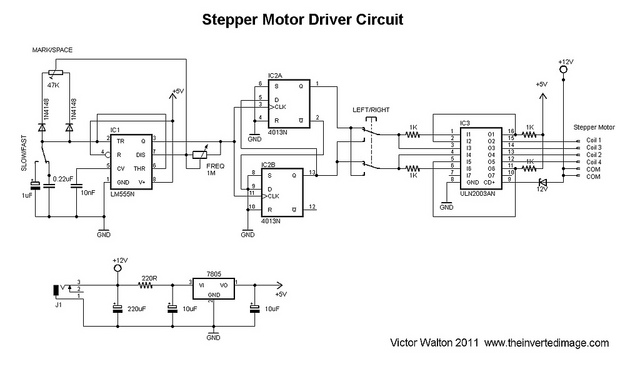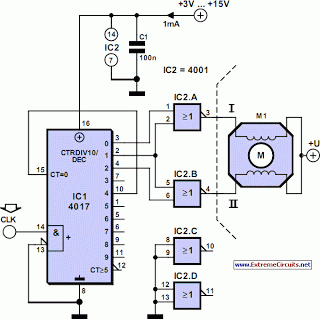
Step up Voltage converter DC to DC
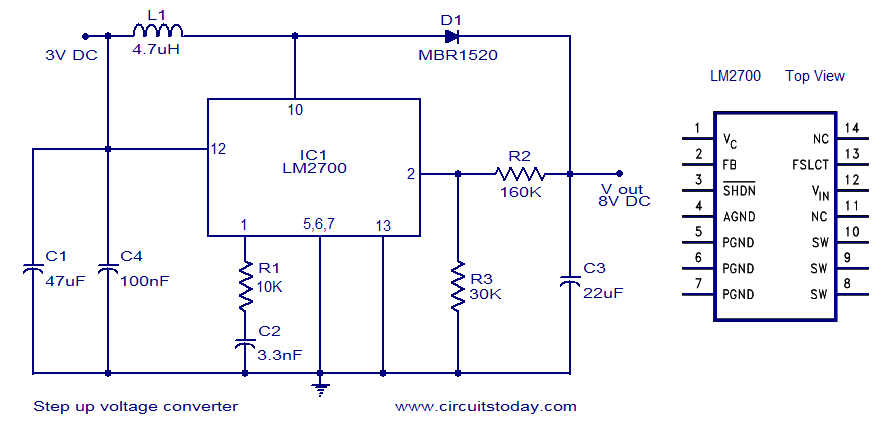
A simple DC to DC step-up voltage converter circuit schematic using the LM2700, which is a step-up switching converter.
The LM2700 is a versatile step-up switching converter designed to efficiently convert a lower input voltage to a higher output voltage. This circuit is particularly useful in applications where the supply voltage is insufficient for the required load, such as powering portable devices from a single-cell battery.
The schematic typically includes several key components: the LM2700 integrated circuit, input and output capacitors, an inductor, a diode, and feedback resistors. The input voltage is applied to the LM2700, which controls the switching of the internal transistor. The inductor stores energy during the 'on' phase and releases it to the output during the 'off' phase, effectively increasing the voltage.
The output voltage can be adjusted by selecting appropriate values for the feedback resistors, allowing for a range of output voltages to be achieved based on the application requirements. The output capacitor smooths the output voltage, providing a stable power supply to the load.
The circuit should also include necessary protection features, such as input and output capacitors to filter noise, and possibly a thermal shutdown feature to protect against overheating. Proper layout and component selection are critical to minimize losses and ensure stable operation across varying load conditions.
In summary, the LM2700-based step-up converter circuit is an efficient solution for applications requiring a higher voltage from a lower input, with flexibility in output voltage settings and essential protective components for reliable performance.A simple dc to dc step up voltage converter circuit schematic using LM2700-which is a step up switching converter.. 🔗 External reference
The LM2700 is a versatile step-up switching converter designed to efficiently convert a lower input voltage to a higher output voltage. This circuit is particularly useful in applications where the supply voltage is insufficient for the required load, such as powering portable devices from a single-cell battery.
The schematic typically includes several key components: the LM2700 integrated circuit, input and output capacitors, an inductor, a diode, and feedback resistors. The input voltage is applied to the LM2700, which controls the switching of the internal transistor. The inductor stores energy during the 'on' phase and releases it to the output during the 'off' phase, effectively increasing the voltage.
The output voltage can be adjusted by selecting appropriate values for the feedback resistors, allowing for a range of output voltages to be achieved based on the application requirements. The output capacitor smooths the output voltage, providing a stable power supply to the load.
The circuit should also include necessary protection features, such as input and output capacitors to filter noise, and possibly a thermal shutdown feature to protect against overheating. Proper layout and component selection are critical to minimize losses and ensure stable operation across varying load conditions.
In summary, the LM2700-based step-up converter circuit is an efficient solution for applications requiring a higher voltage from a lower input, with flexibility in output voltage settings and essential protective components for reliable performance.A simple dc to dc step up voltage converter circuit schematic using LM2700-which is a step up switching converter.. 🔗 External reference
Warning: include(partials/cookie-banner.php): Failed to open stream: Permission denied in /var/www/html/nextgr/view-circuit.php on line 713
Warning: include(): Failed opening 'partials/cookie-banner.php' for inclusion (include_path='.:/usr/share/php') in /var/www/html/nextgr/view-circuit.php on line 713
